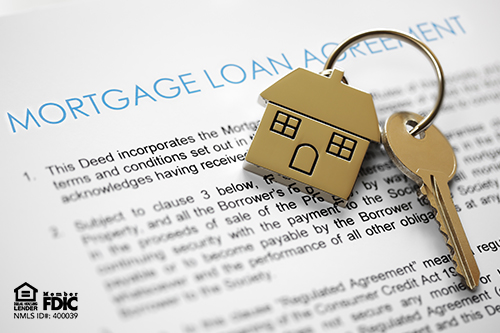When the time comes to seek a mortgage loan, your lender may tell you because of your circumstances, to qualify you may need to pursue a non-QM (non-qualifying mortgage) home loan instead of a conventional home loan. So, what exactly does that mean?
A conventional mortgage loan is not backed by the government but is offered by private lenders or government-sponsored enterprises (GSEs) like Fannie Mae and Freddie Mac. This is the most popular type of home loan, accounting for almost 53% of origination volume in 2022.
Non-QM mortgage loans, or non-qualified loans, do not meet the underwriting guidelines set by Fannie Mae and Freddie Mac, having their own set of qualifying criteria set forth by the offering lender. Borrowers seeking non-QM loans have unique circumstances, such as being self-employed, owning small businesses, being gig workers, or purchasing an investment property.
Here are some of the differences between conventional loans and non-QM loans:| Feature | Conventional Loan | Non-QM Loan |
| Government-backed | No | No |
| Underwriting Guidelines | Must meet Fannie Mae and Freddie Mac guidelines | More flexible guidelines determined by lender |
| Credit score requirements | Varies by lender | Varies by lender but may be lower than conventional loans |
| Down payment requirements | Typically 3% or higher | It may vary, but may be higher than conventional loans |
| Interest rates | Varies based on credit score, debt-to-income ratio, and loan-to-value ratio | Typically higher than conventional loans to compensate for higher risk level to lenders |
| Income documentation | W2s and tax returns showing two consecutive years of employment | Lenders may look at bank statements, verified assets or income from rentals |
Here are some examples of non-QM loans:
- Jumbo loans: Jumbo loans are for borrowers who require more financing than the conforming loan limits set by Fannie Mae and Freddie Mac.
- Bank statement loans: Bank statement loans allow self-employed borrowers to apply for a home loan without providing tax returns. Lenders review the business deposits on the borrower's bank statements to determine if they can produce sufficient income to warrant approval for a mortgage loan.
- 1099 loans: Much like a bank statement loan, A 1099 loan is for self-employed or independent contract workers. Lenders use the gross income from a 1099 instead of tax returns.
- Asset depletion loans: An asset depletion loan, also known as an asset dissipation loan, allows borrowers who do not want to use their income from employment to qualify but rather their significant assets. Conventional loans allow these, but non-QM loans have more flexible guidelines.
- DSCR loans: DSCR, or debt-service coverage ratio, measures the cash flow a borrower has to pay against current debt obligations. Real estate investors use a DSCR loan to help them qualify for a loan based on their property’s cash flow without verifying personal income.
If your circumstances require you to pursue a non-QM mortgage loan instead of a conventional one, ensure you understand all the requirements and options available. If you want more information on which non-QM loan may be right, talk to the non-QM experts at NASB at 888-661-1983 or click here for more details.




